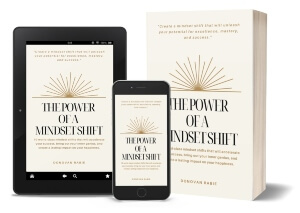In this comprehensive article, we delve into the intricacies of an emotion wheel, its purpose, and its various applications in different fields. As a leading authority on SEO and high-end copywriting, we aim to deliver content that not only educates but also outranks existing articles on the same subject.
In This Article
ToggleWhat is an Emotion Wheel?
An emotion wheel, also known as a feelings wheel or an emotional spectrum, is a powerful tool used to visualize and categorize human emotions. It was first introduced by psychologist Robert Plutchik in 1980, and since then, it has gained significant popularity in various disciplines, including psychology, therapy, marketing, and even creative writing.
10 world-class mindset shifts that will…
~ Accelerate your success.
~ Bring out your inner genius.
~ Create a lasting impact on your happiness.
Price From: $5.18
Understanding the Structure of an Emotion Wheel
The emotion wheel typically consists of concentric circles, with each circle representing a different level of emotional intensity. The innermost circle contains the most fundamental emotions, such as joy, sadness, anger, and fear. As we move towards the outer circles, the emotions become more complex and nuanced, resulting from the blending of primary emotions.
The Eight Basic Emotions
The core of the emotion wheel is comprised of eight primary emotions, which are considered the building blocks of all other emotions. These emotions are:
- Joy: A feeling of happiness and contentment.
- Sadness: A sense of sorrow and unhappiness.
- Anger: A reaction to perceived threats or injustices.
- Fear: An emotion triggered by danger or potential harm.
- Surprise: The response to unexpected events or stimuli.
- Disgust: A feeling of aversion or revulsion towards something.
- Trust: The belief in the reliability and honesty of others.
- Anticipation: The excitement and eagerness towards future events.
The Spectrum of Blended Emotions
Moving outwards from the core emotions, the wheel demonstrates how blending the primary emotions creates more complex and nuanced feelings. For example, blending joy and anticipation may result in optimism, while blending fear and surprise could lead to shock or startle.
The Function of an Emotion Wheel
Self-Discovery and Emotional Awareness
One of the primary functions of an emotion wheel is to promote self-discovery and emotional awareness. By identifying and labeling their emotions using the wheel, individuals can gain a deeper understanding of their feelings, leading to better emotional regulation and decision-making.
Enhancing Communication and Empathy
In interpersonal relationships, the emotion wheel serves as a valuable tool for improving communication and empathy. By accurately identifying emotions in themselves and others, individuals can express their feelings more effectively and respond empathetically to the emotions of those around them.
Psychological Counseling and Therapy
Therapists and counselors often use emotion wheels as part of their therapeutic approach. It allows them to help clients explore their emotions, traumas, and triggers, leading to a more profound therapeutic process and emotional healing.
Applications of the Emotion Wheel
Marketing and Advertising
In the realm of marketing and advertising, understanding emotions is crucial for creating compelling and relatable campaigns. Emotion wheels help marketers identify the emotions they want to evoke in their target audience and tailor their content accordingly, resulting in more impactful advertising.
Creative Writing and Storytelling
Authors and screenwriters utilize emotion wheels to craft well-rounded and authentic characters. By attributing specific emotions to their characters, writers can evoke powerful emotional responses from their readers, making the narrative more engaging and immersive.
Conflict Resolution and Mediation
In conflict resolution and mediation processes, emotion wheels can facilitate productive discussions. By encouraging individuals to express their emotions and identify common ground, the wheel fosters understanding and promotes the resolution of disputes.
Conclusion
In conclusion, the emotion wheel serves as a valuable tool in various domains, enabling individuals to gain insight into their emotions, fostering empathy and effective communication, and enhancing creativity and marketing strategies. Its applications are far-reaching, from personal growth and therapy to professional endeavors like marketing and creative writing.






